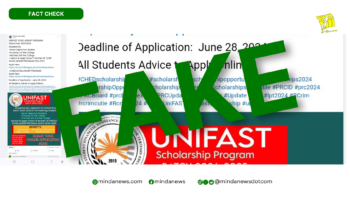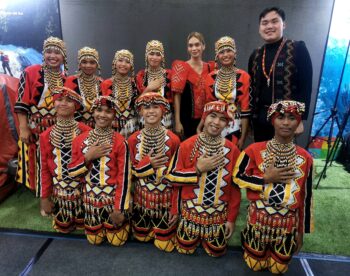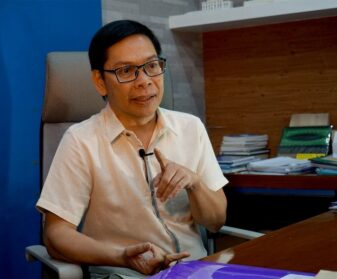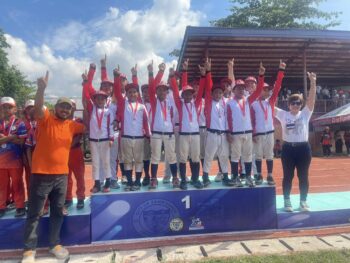2nd of three parts: Worrisome Consequences
GENERAL SANTOS CITY (MindaNews / 23 February) — Contrary to the original plan, not all MNLF (Moro National Liberation Front) factions are represented in the New BTC. In its “Recasting the Bangsamoro Transition Commission”, the BPDR provides: “To be composed of representatives from MILF, MNLF, ARMM, Indigenous Peoples, Sultanates, LGUs and other sectors.” Only the MNLF-Sema group or MNLF Council of the 15 is represented in the New Bangsamoro Transition Commision (BTC) — three of the ten Government appointees. It is not clear if any of the other seven represents the Sultanates.
The MNLF Alonto and Habib Hashim (MNLF Command Council) groups are not represented. Founding Chairman Nur Misuari refused to join the Moro Islamic Liberation Front (MILF)-led New BTC; granted by President Duterte, his group will have a separate talk with the Government. This will have worrisome consequences.
Bangsamoro unity will continue to be elusive. Abul Khayr Alonto, acknowledged chair of the MNLF-Alonto group who had been more open than Muslimin Sema in declaring support for the BBL will feel alienated. As the Hashim and other splinter groups still recognize Misuari as the ultimate MNLF leader, Misuari’s refusal to join the New BTC will radically alter the course and fate of the nearly-realized quest for the Bangsamoro – in the 1976 Tripoli Agreement, “Autonomy for the Muslims in Southern Philippines”.
The GPH-MNLF Peace Talks
How will the separate peace talk between the Duterte Government and the Misuari MNLF complicate the fulfillment of the Bangsamoro and put in question Secretary Dureza’s assurance that the New BTC will come up with a Bangsamoro basic law “for a genuine political autonomy for the Bangsamoro people in Mindanao”?
Media reports, citing or quoting statements that can be considered “official”, reveal some relevant situations:
First: The government and MNLF panels led by Nabil Tan and Randolph Parcasio, respectively, have not yet held a formal meeting (MindaNews, 2/10/17: GPH, MILF…; The Philippine Star 2/13/17: Government, MNLF to resume talks ). Only during such meetings will the panels be able to (1) set their timeframe, (2) determine the mode of negotiation, (3) agree on the talking points, and (4) formulate the negotiation guidelines and protocols — in sum, the negotiation agenda.
Second: The MNLF wants to negotiate for the full implementation of the 1996 FPA. This suggests the resumption of the 2007-2016 MNLF-GRP-OIC Tripartite Review called and facilitated by the Organization of the Islamic Cooperation (formerly, Conference) of the 1996 FPA.
Third: The MNLF demands will be confined to (1) governance, (2) wealth sharing, and (3) territory — the three issues still unresolved when the Review closed in January 2016. Obviously, the three when resolved will be incorporated with the Review’s 42 consensus points in a draft bill to strengthen the Autonomous Region in Muslim Mindanao.
Relevant Questions
Of the “First”: When will the negotiation agenda be ready? Can the MNLF-Misuari draft bill be submitted to the Congress together with that of the New BTC?
The Congress will be ultimately tasked to consolidate the New BTC and MNLF-Misuari draft bills. Will the legislation on Bangsamoro not be suspended should the two draft bills not be submitted together?
The timeline is for the Bangsamoro basic law to be enacted during the Second Session of the 17th Congress, establish the Bangsamoro Transition Government in July 2018 and have the regular officials of the Bangsamoro elected in the May 2019 election. Will the suspension of or delay in the legislation not upset this timeline at the risk of putting off AGAIN the establishment of the Bangsamoro?
On the “Second”: Separate from the New BTC, the negotiation will be outside of the mandates of EO 08 and the BPDR. Will it adopt the “Review” mode and procedure? Will the OIC be involved? Will the Tan- and Parcasio-led implementing panels negotiate and draft the proposed amendments to RA No. 9054?
Of the “Third”: The issues on governance and territory eluded resolution until the end of the seven-year Review. The same issues threatened to scuttle the 1996 FPA; however, President Fidel V. Ramos’ “win-win” solution broke the impasse – a solution that turned unsatisfactory, hence, reviving the issues. Will the issues be put to rest by Duterte? Tan and Parcasio both participated in the Review. Will their experience make the difference?
The MNLF-Misuari draft bill will amend R.A. No. 9054 to strengthen and retain the ARMM; that of the New BTC will abolish it. How can the Congress reconcile the two drafts – one for abolition, changing the presidential-unitary type of government of the autonomy to the ministerial-parliament-asymmetrical; the other, the exact opposite? Will this not give the legislators the excuse to write a substitute bill the Moros will reject?
The MNLF and MILF 40 years ago were one in negotiating the 1976 Tripoli Agreement for the establishment of the “Autonomy for the Muslims in Southern Philippines” which was granted. Unfortunately, their split due to personal and fundamental differences, to a large extent, stalled the full and genuine implementation of the Autonomy.
Now, the Autonomy, through their separate negotiations with the Philippine government, is about to attain that. Why can’t their leaders – founding Chair Misuari and those of the MILF – set aside their differences, decide between the ARMM and the Bangsamoro as the full and genuine implementation of the “Autonomy for the Muslims in Southern Philippines” and REUNITE? Their refusal to is most disheartening to see.
(Tomorrow: Not that Simple)







